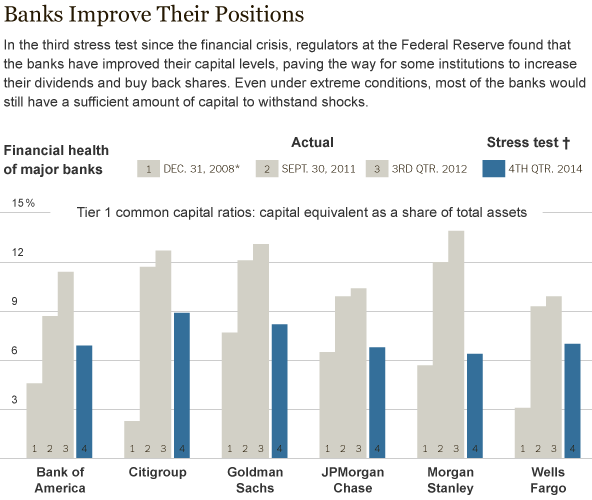LUXEMBOURG — European Union finance ministers on Thursday began to negotiate rules for rescuing or closing failing banks, regulations considered crucial to promoting financial stability in the region.
But the two-day meeting could be overshadowed by renewed concerns in Greece, where the crisis began. On Thursday, the International Monetary Fund and euro zone officials issued a thinly veiled warning that it could suspend aid to Greece by the end of July if the political turbulence prevented monitors from completing their review of the country’s finances. Olli Rehn, the European commissioner for economic and monetary affairs, expressed frustration that Greece was again undermining efforts in Europe to turn the page on its five-year crisis.
“I love Greece but I’m very much looking forward to a Eurogroup news conference where Greece is not going to be discussed and a summer where we don’t have any Greek crisis,” Mr. Rehn said at a news conference.
The urgency for transformative measures has largely ebbed since the European Central Bank calmed the markets by promising to buy bonds from troubled euro zone countries. But the surge of concerns about Greece underscored the need for the European finance ministers to secure deals — however modest — during the marathon negotiating session in Luxembourg.
A so-called banking union could help prevent a recurrence of the chaos that ensued during a bailout for Cyprus in March, when governments and international lenders argued over how to impose losses on investors in the country’s troubled banks. Such policies could also prove vital if banks reveal new vulnerabilities during the next round of so-called stress tests, which will most likely happen next year.
The goal of the ministers’ talks was to develop policies that “finally close the vicious circle between the banking crises and sovereign crises” and to “definitively put behind us the financial crisis that has weighed on Europe since 2008,” said Pierre Moscovici, the French finance minister.
The meetings could also allow the leaders of the Union’s 27 member states to endorse reform efforts ahead of their meeting next week in Brussels, their last scheduled session before the summer. Still, the meetings are likely to result in incremental steps, rather than transformative ones like creating a lender of last resort to guarantee government or bank debt. The meeting of the 17 ministers from the euro zone, called the Eurogroup, focused on determining the conditions under which countries could draw on a shared bailout fund to inject money directly into troubled banks.
Even though European Union leaders agreed to push forward that initiative a year ago, the ministers confirmed on Thursday night that this tool will not be available until the European Central Bank takes over the supervision of some of the bloc’s largest banks in the second half of 2014. But ministers agreed that up to 60 billion euros, or about $80 billion, could be drawn from the fund to rescue banks whose failure could have broad impact on the financial system.
The ministers also left open the possibility of recapitalizing banks that are already in trouble. “The potential retroactive application of the instrument will be decided on a case-by-case basis,” Jeroen Dijsselbloem, the president of the Eurogroup, said at a news conference.
That option is important for Ireland, which invested more than 30 billion euros, or about $40 billion, to rescue its banks during the crisis. The country is lobbying to use the bailout fund, called the European Stability Mechanism, to recapitalize the banks and relieve its debt.
“We’ve always argued that Ireland was an exceptional case,” Michael Noonan, the Irish finance minister, said at the meeting earlier on Thursday. “We’re not arguing this case for all our colleagues in the euro zone.”
The ministers decided to oblige countries to contribute 20 percent of any capital increase as a way to encourage governments to prevent mismanagement or losses at banks, a demand made by countries like Germany. When the meetings continue Friday, the finance ministers from all countries in the European Union will try to hash out a plan for shutting down troubled banks.
A central issue is the rules for imposing losses on a bank’s creditors, rather than putting the burden on taxpayers. Some countries, including Britain, are pushing to ensure that governments retain some flexibility. The worry is that automatic losses for some creditors could set off fears of losses at other institutions, which could start bank runs.
But for some countries, like Spain, where government finances are under severe strain, having a single rule book has become an important competitive consideration. Spain wants to ensure that bank investors do not flee to more prosperous countries like Germany, where mechanisms for resolving bank problems might be better capitalized and could be used to shield creditors from losses.


